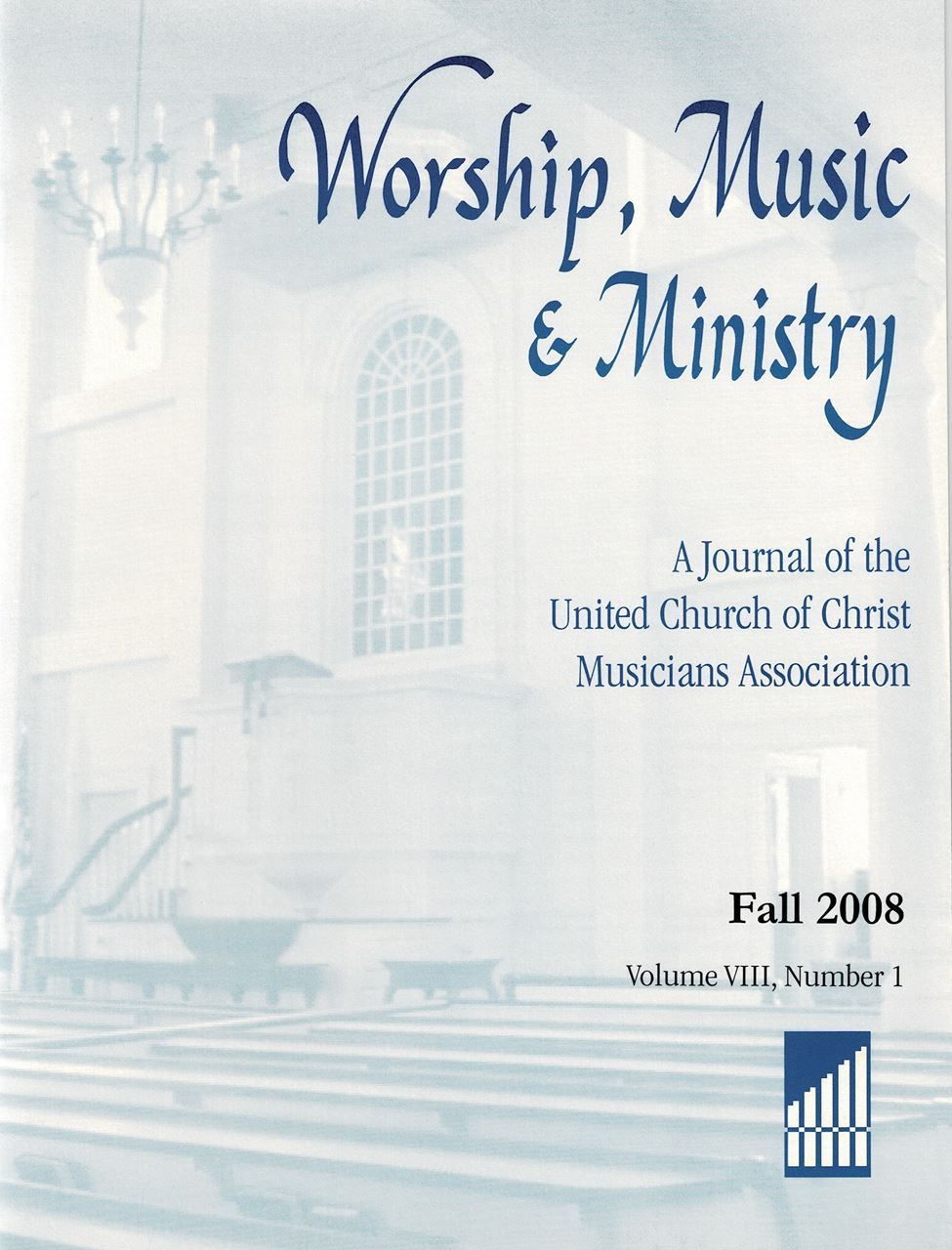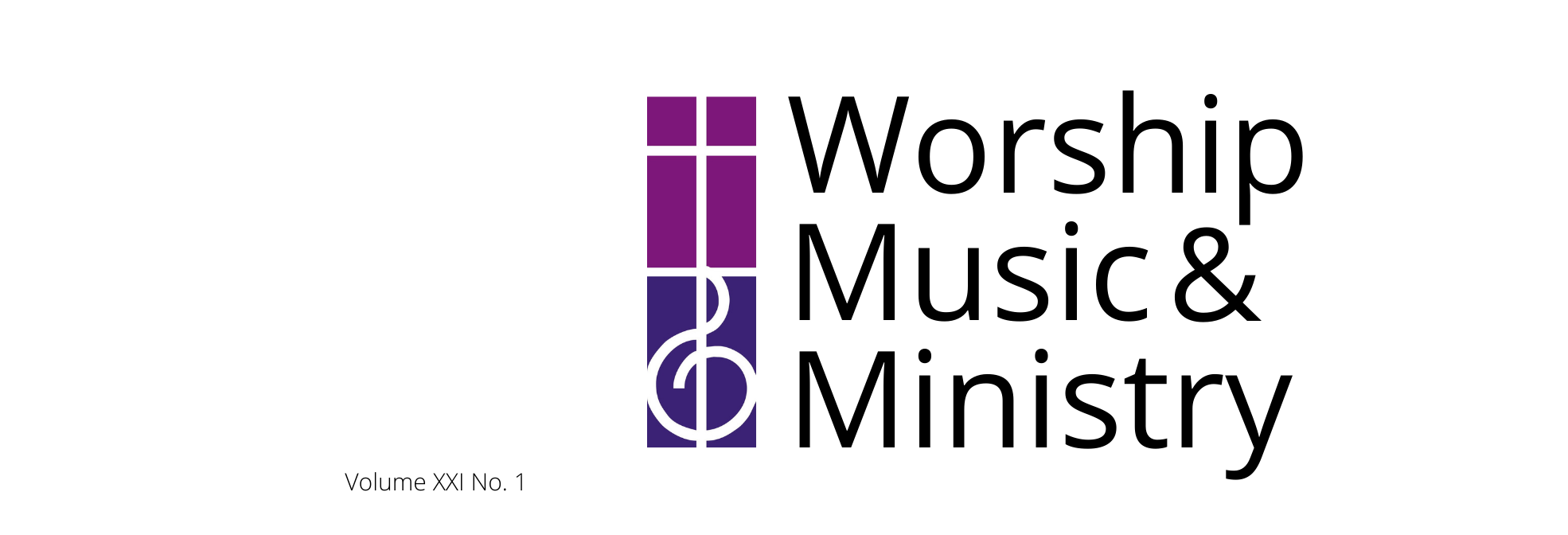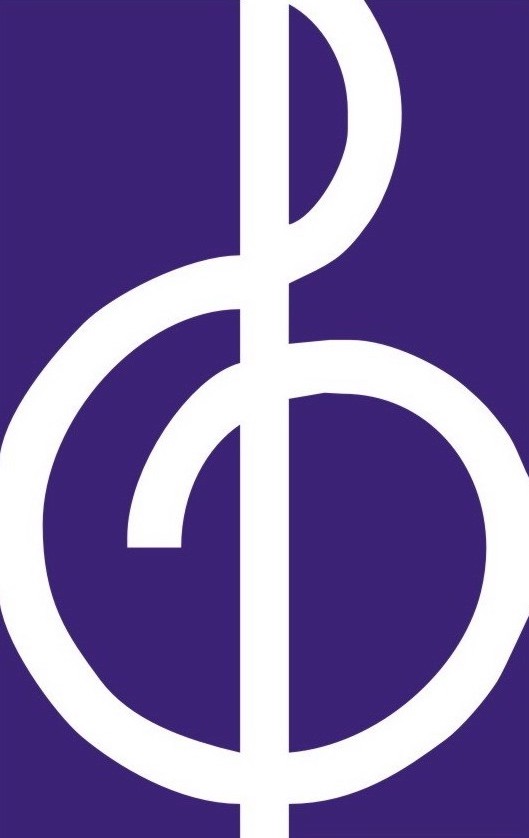By Linda Witte Henke
In the previous issue, I invited readers to reflect on the richness of the liturgical form passed down to us over the centuries. In this issue, I invite you to reflect on the liturgy through two lenses -- the lens of the assembly and the lens of worship leaders. In holding those two perspectives in dynamic tension, we discover heightened awareness of the significance of the visual, interactive components of the relationship between the two within the worship context.
One of my favorite visuals in worship involves the use of processionals as opportunities both to engage the assembly in movement and to direct liturgical focus around the worship space: 
- Consider beginning worship with an engaging hymn and a procession of worship leaders (crucifer with a processional cross, followed by the choir, candle bearers, acolytes, assisting minister, presiding minister, etc.). Encourage the assembly to stand when you introduce the hymn, turning to face the cross and follow it as it moves into the space.
- When you engage in a gathering rite, consider a procession of crucifer and worship leaders to the font, reminding the assembly that we enter worship as those whom God claims in holy baptism to be in communion with God and one another.
- Consider using a gospel procession (crucifer, candles, book bearer, and preacher) to locate the gospel reading amid the assembly. Encourage the congregation to stand when you introduce the gradual or sequence hymn, turning to follow the cross as it moves into the center of the space for the reading and then back again after the reading of the lesson. The torches mark the presence of living Logos of God amid the assembly.
- Consider concluding worship with a stirring hymn and a procession of worship leaders (crucifer with a processional cross, followed by candle bearers, choir, acolytes, assisting minister, presiding minister, etc.) out of the space. Encourage the assembly to stand when you introduce the hymn, turning to follow the cross as it leads not only the worship leaders but also the assembly out into the world to bear God’s love and grace to all.
With each of these processions, worshipers are allowed to experience more fully one of the most powerful visual cues of the liturgy (one that worship leaders sometimes take for granted): the assembly, that wonderfully diverse collection of people who have responded to God’s call to gather and be transformed into the Body of Christ. With each procession, the focus of attention is shifted around the worship space, demonstrating that worship is, indeed, “the work of the people” and not just the words and actions of the (typically, “up front”) worship leaders.
I know from personal experience that worship leaders can become desensitized to the impact of their gestures, affect, and projection on the assembly’s understanding of worship:
- The significance of the greeting is enriched by the leader’s expansive gesture and genuinely warm affect to convey an appropriate sense of joy in gathering as God’s people in worship.
 - Reading the word is an important task that deserves careful preparation and effective delivery. Consider gathering in the worship space a circle of people interested in serving as readers and encourage them to share what draws each of them to serve in this ministry. Invite them to take turns reading a lesson as they would in worship (at the lectern, using a microphone, with existing lighting, etc.), then engage them in offering constructive feedback to one another on annunciation, articulation, inflection, volume, pace, affect, etc. Enlist their commitment to take turns praying for one another before serving as a reader in worship (and even meeting together regularly to prepare the readings).
- Preachers embrace various methods and resources in preparing and crafting their sermons. Still, they must be mindful that this is only one aspect of their proclamatory calling. The preacher’s delivery of the sermon is empowered and embodied by heightened awareness of their style, tone, pace, posture, gestures, and eye contact with the assembly. Preachers might consider soliciting occasional feedback from a few congregation members; the brave of heart might consider preparing a simple, well-thought-out survey for random placement into a few bulletins each Sunday to solicit diverse and anonymous feedback.
- In seminary, I had a pastoral theology professor who was fond of reminding us that “90 percent of pastoral care is just showing up.” Indeed, one of the most impactful realizations during my early days in parish ministry was that the sermon is not about one person (the pastor) addressing a whole bunch of people (the assembly). Instead, the sermon is an intimate conversation between the pastor and each parishioner in worship. That realization helped me to understand how important it is for the pastor to show up for that conversation and to be fully present in each sermon. This realization also prompted me to be more intentional about eye contact and open my heart to the Spirit’s work to spark one-on-one faith connections between pastor and people through fully engaged and embodied preaching.
 - One of my pet peeves as a member of the assembly (we’re each allowed a few, right?) is when I’m invited to say or speak the creed rather than to confess or profess it. It took me a while to realize that to confess or profess our faith requires that someone receive our confession/profession, and that makes most of us uncomfortable. In the spirit of healthy discomfort, consider occasionally inviting the assembly to turn and face one another when confessing or professing the creed. In doing so, ask them to consider what it means to acknowledge to one another that we share the same faith in the same God and are, therefore, members of the same family of God – created, redeemed, and sanctified for common, holy purpose in loving God, caring for God’s creation, and serving one another’s needs.
- My pet peeve extends to include the prayers of intercession, which ought to be more than just read or said but prayed. I urge intercessors to come to worship prepared to pray by familiarizing themselves with the petitions (and the significance behind them) so that they may engage the assembly’s participation with speech that is clearly articulated, at a measured pace, and in a prayerful tone and that enables each member of the congregation to enter into prayer with them. Likewise, we ought not to merely say the Lord’s Prayer but to pray this prayer with a sincere longing that it may nurture our faith, realign our priorities, and conform our lives and relationships with God’s will and ways.
- Pastors and other worship leaders occasionally need to be reminded that their initiation of the sharing of the peace is a holy moment that invites worshipers into the presence of the Risen Christ. Consider initiating it with an expansive, inclusive gesture with a voice and affect that conveys your love and goodwill toward everyone in the assembly. This is another moment when failing to “show up” can deprive the assembly of a precious gift.
- At the risk of sounding like a “clanging symbol,” I urge those who preside at the Holy Communion to cultivate disciplines for being fully present there, too. Permit yourself to use slightly “exaggerated” gestures so the whole congregation may recognize their significance. When you lead the dialogue, enter into the significance of those brief but profound exchanges. When you offer the Eucharistic Prayer, do so with reverence and intention so that the prayer may become a gift for each communicant. When you speak the Words of Institution, do so with an awareness of our Lord’s presence at your side, eager to extend an invitation for all to be fed and nourished so that they might become his Body and Blood, broken and poured out for the world. As you remember or speak about this being God’s table and that God desires all people to find a place of welcome there, be intentional about conveying that welcome and hospitality in an inclusive way.
 - As I’m writing these words, I’ve recalled my experiences in parish ministry and how hectic Sunday mornings were: scurrying from one worship service to teaching responsibilities and then back to a second worship service, welcoming visitors, responding to greetings from parishioners, answering questions, reminding acolytes of their duties, dealing with last minute changes, incorporating additional prayer concerns into the intercessions, etc. I remember, in my body, how often I felt pulled in so many directions that I would enter worship with frayed nerves and fractured thoughts.
But then I also remember the point at which I dared to declare the ten minutes immediately preceding every worship service as time for me to spend alone in the sacristy – to breathe, to center, to pray, to glance through my sermon notes, and to be reminded of what a privilege it is to lead God’s people in worship. God provided people in each of the congregations I served who were willing and able to manage the chaos. At the same time, I did what I needed to do to “show up” for worship. I was reminded once again that liturgy is, indeed, the work of the people. ■ — Photos were taken by Phil Henke and used with permission.

 Linda Witte Henke is an artist, writer, former ELCA pastor, and occasional presenter at conferences and symposia on worship, spirituality, and the arts. Her commissioned work resides in more than 80 corporate and private collections. Her exploratory work, focused on spiritual themes, social issues, and personal experiences, is exhibited in Europe, Asia, and the U.S. Learn more about Henke's ministry at lindahenke.com. Linda Witte Henke is an artist, writer, former ELCA pastor, and occasional presenter at conferences and symposia on worship, spirituality, and the arts. Her commissioned work resides in more than 80 corporate and private collections. Her exploratory work, focused on spiritual themes, social issues, and personal experiences, is exhibited in Europe, Asia, and the U.S. Learn more about Henke's ministry at lindahenke.com.
| |
United in Love Composition by Andrey Stolyaroved
You Are My Shepherd By Gloria Fanchiang

"Upright cross with outwardly widening ends. It is often seen in relics from the late antique and early medieval Byzantine Empire (until c. 800) and was adopted by other Christian cultures of the time, such as the Franks and Goths."
— Wikipedia
 The first 22 years of Worship, Music & Ministry in print.
|






 Linda Witte Henke is an artist, writer, former ELCA pastor, and occasional presenter at conferences and symposia on worship, spirituality, and the arts. Her commissioned work resides in more than 80 corporate and private collections. Her exploratory work, focused on spiritual themes, social issues, and personal experiences, is exhibited in Europe, Asia, and the U.S. Learn more about Henke's ministry at
Linda Witte Henke is an artist, writer, former ELCA pastor, and occasional presenter at conferences and symposia on worship, spirituality, and the arts. Her commissioned work resides in more than 80 corporate and private collections. Her exploratory work, focused on spiritual themes, social issues, and personal experiences, is exhibited in Europe, Asia, and the U.S. Learn more about Henke's ministry at 


